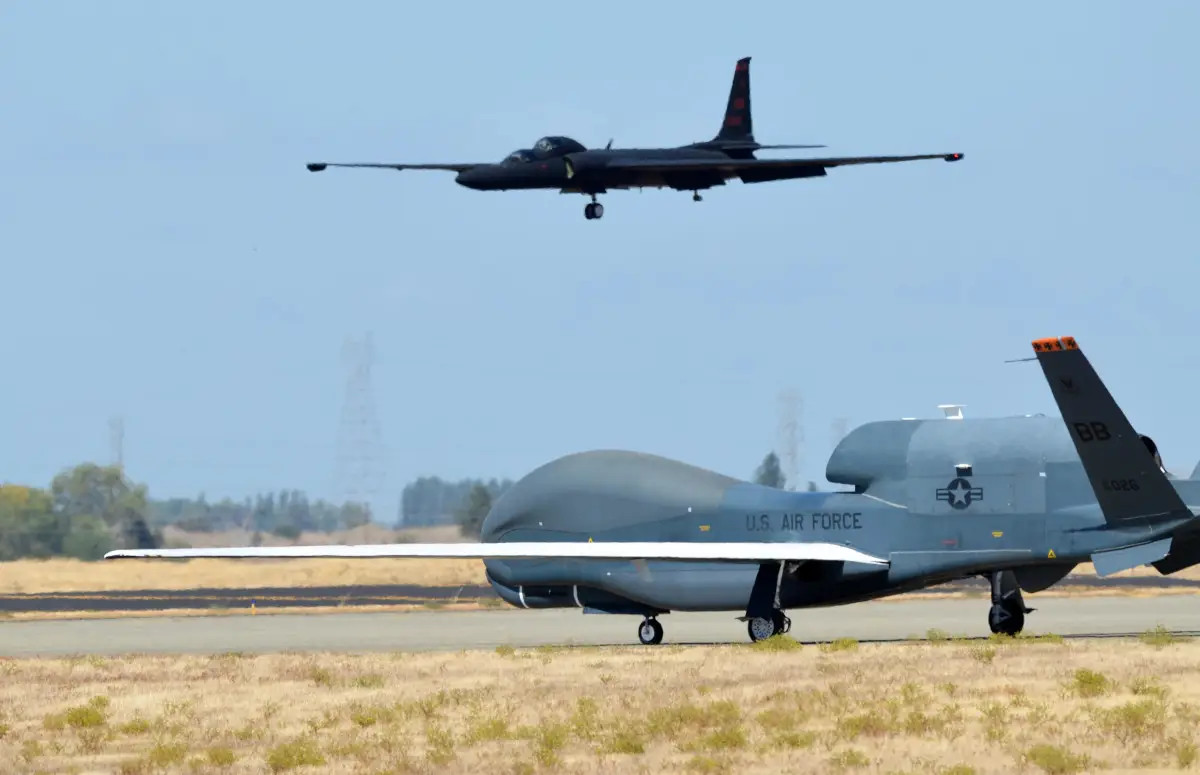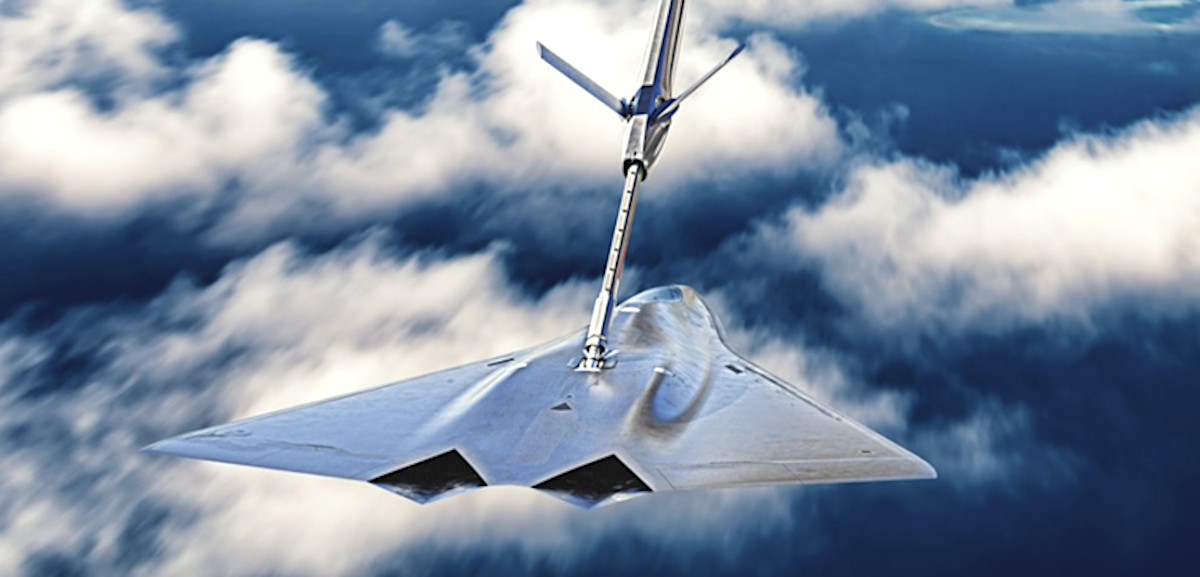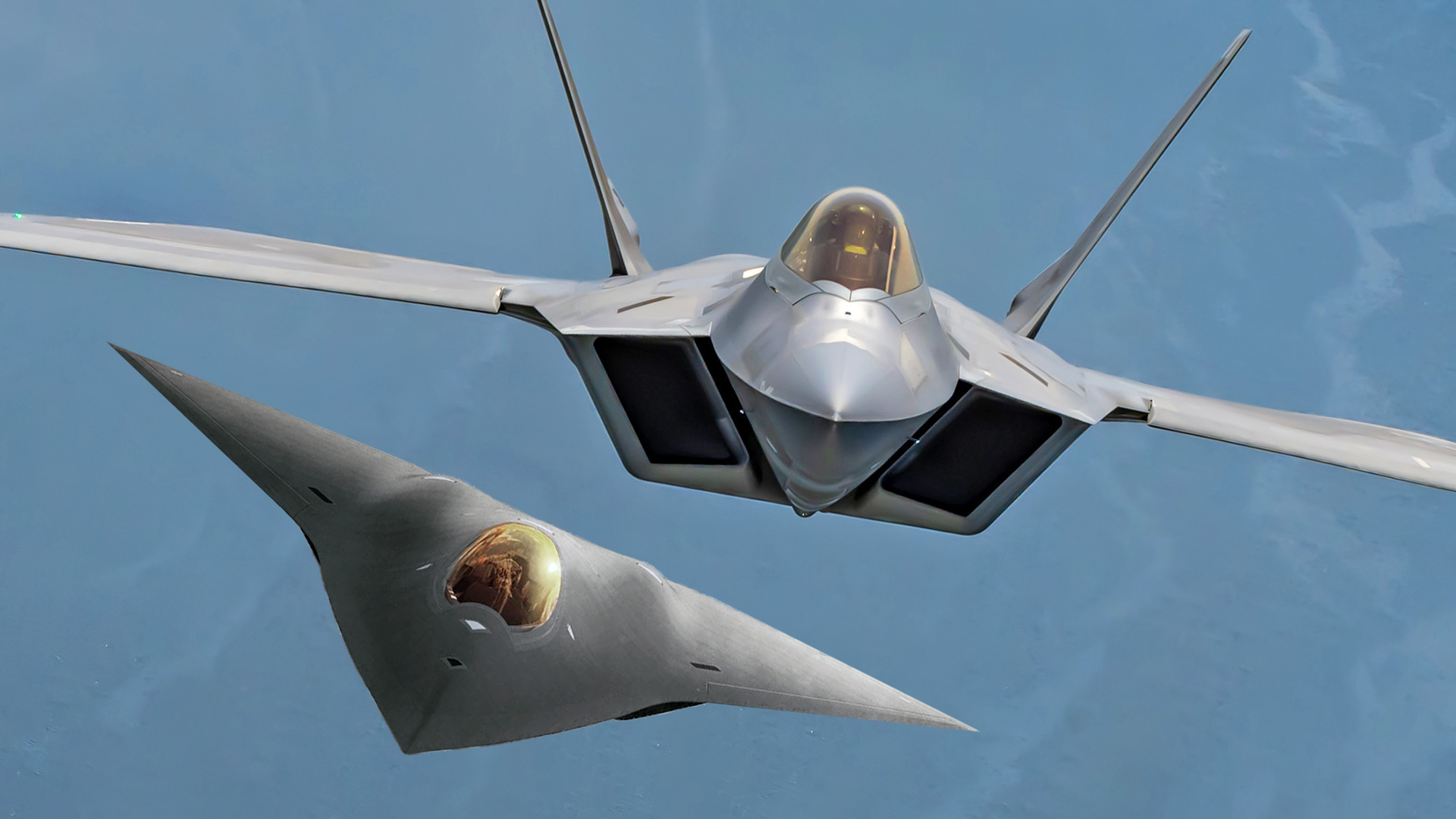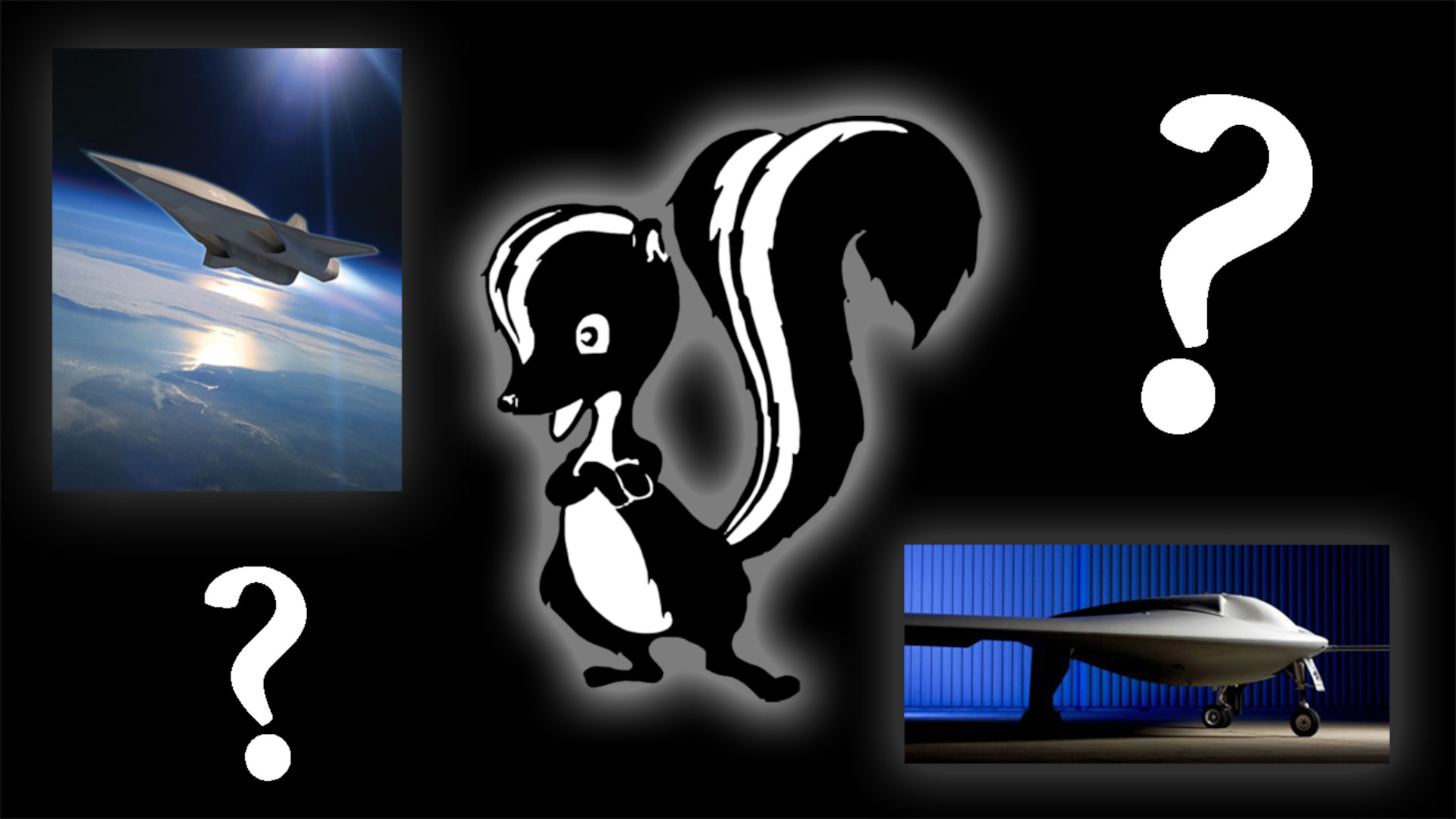We have explored the possibilities related to the existence of a high-altitude, long-endurance stealth drone, the so-called ‘RQ-180,’ and how it’s likely poised to eclipse the crewed U-2S Dragon Lady and uncrewed RQ-4 Global Hawk surveillance platforms and become one of the most important military aircraft of a generation. Now, there are intriguing indications that a complementary platform or perhaps even a successor to the RQ-180 is not only being developed by Lockheed Martin’s legendary Skunk Works, but that this even more advanced spy drone has already been delivered.
These potential revelations come from the latest episode of the Defense & Aerospace Air Power Podcast, hosted by editor-in-chief Vago Muradian, joined by regular guest J.J. Gertler, director of The Defense Concepts Organization and senior analyst at the Teal Group. For the time being, we have no kind of confirmation about these statements, but they are certainly highly interesting, considering what we do know about related programs and emerging requirements.
Speaking about the mysterious new spy drone from the Skunk Works, Muradian explains this is a “much more capable reconnaissance aircraft” than the RQ-180 and that “there are articles that have already been delivered,” although no indication of how many or at what stage the program is at.
Muradian adds that “there have been challenges with that program [and] some speculation that it had been canceled.” He continues: “My understanding is that the program was re-scoped because it is that ambitious a capability that [it] required a little bit of re-scoping in order to be able to get to the next block of aircraft.”

The podcast also provides what it says is some of the backstory to the Skunk Works drone, the name of which is so far unknown. This suggests that the Air Force essentially came to a deal with Lockheed Martin and Northrop Grumman about how to supersede the U-2 and the RQ-4 now in use, as well as what would come after the RQ-180.
The implication here is that Northrop Grumman was broadly happy to not challenge the announced retirement of the RQ-4 since it was already engaged in developing the RQ-180 that would replace it (and the U-2). At the same time, it seems that Lockheed Martin was willing to see the U-2 head into retirement, after almost seven decades of service, since it was given the task of building a successor to the RQ-180 or another aircraft that at least complements it.

Muradian does add, however, that there are “combatant commanders and a lot of people in the ecosystem who want the U-2 to stay around as long as possible because it gives a tremendous amount of capability,” something that we have talked about in the past, too.
Whatever form this new Skunk Works drone takes, it’s worth recalling first that even the RQ-180 remains highly secretive. Even the designation is only presumed, based on an extrapolation from Lockheed Martin’s RQ-170 Sentinel, another flying wing design, although a much smaller tactical reconnaissance aircraft.

When it comes to the RQ-180, it is possible that the airframe supports more than just reconnaissance, with networking and electronic warfare being other potential functions, although they may be hosted in various combinations. Regardless, the RQ-180 is clearly designed to penetrate into and persist deep into contested airspace and directly over or very near highly contested locales. This implies a large, twin-engine, flying wing design that incorporates highly advanced, all-aspect, broadband, very low-observable (stealth) features. It is expected to fly at very high altitudes for very long periods of time without the enemy being able to engage it, and hopefully, detect it at all.
While the RQ-180’s supposed design concept remains shadowy, we know even less about the Skunk Works drone that the Air Force is apparently already lining up as a complement, if not an outright successor to the RQ-180.
We have no idea, for example, if the new drone will broadly follow the same high-flying stealthy flying-wing design as the RQ-180, or if it will be something altogether different. There have certainly been repeated sightings of mysterious flying-wing-type drones in recent years.
For its part, in years past, Lockheed repeatedly dropped hints that it was working on a proposed SR-72 uncrewed hypersonic aircraft, which would be a conceptual successor to the Cold War-era SR-71 crewed spy plane, although with a strike component. Interestingly enough, the SR-72 program then went quiet, before a mysterious SR-72-like aircraft named Darkstar appeared in the movie Top Gun: Maverick, a fact that Lockheed was more than happy to capitalize upon. The firm continuously referenced that the aircraft was not science fiction and was instead based on capabilities that are real and obtainable today. In some ways, Darkstar became a fictional surrogate for the SR-72, perhaps suggesting that the real-world program had gone into the black world, as we posited was the case.

Well before the release of Maverick, we had suggested that the secretive SR-72 program could be much further advanced in terms of its development than Lockheed had ever previously acknowledged.
From as early as 2016, Lockheed was openly discussing the possibility of building a demonstrator aircraft, roughly the size of an F-22 Raptor, to help prove the technologies that would underpin the SR-72’s hypersonic design. It was predicted that a demonstrator of this kind would cost less than $1 billion to produce and could take to the air within just a few years of the program being launched.
Of course, innumerable questions remain, most importantly, whether the new Skunk Works drone has any kind of relationship with the SR-72 or other potential hypersonic designs. Lockheed Martin is known to be heavily invested currently in hypersonic projects, but the publicly acknowledged work it is doing is primarily centered on the developmental hypersonic missiles.
Meanwhile, there are indications the Air Force is increasingly interested in high-end hypersonic space planes in this class, with the service having awarded a contract to Leidos to develop a new hypersonic air vehicle as part of its secretive Mayhem program. Information about this is limited but points to an experimental design to demonstrate an ability to carry various payloads to support strike and intelligence, surveillance, and reconnaissance missions, and could lead to an operational platform.

Moreover, we cannot say for sure if the supposed new drone is intended to complement the RQ-180 or fully replace it. If the latter, it would raise questions about how long the RQ-180 is even expected to serve. Perhaps more likely is that the RQ-180 and the new Skunk Works drone represent two entirely separate capabilities, with the first being persistent penetrating reconnaissance, networking, and electronic warfare, and the other being optimized for hypersonic strike and reconnaissance. That would also seem to tie in better with what we know about the Air Force’s hypersonic aircraft requirements.
Without a doubt, there is a huge amount that we still don’t know when it comes to the Air Force’s future strategic reconnaissance aircraft, not just about the new Skunk Works spy drone, but also about the RQ-180. But we are clearly at a very interesting juncture right now, with more than one program taking shape within different companies that have no shortage of expertise in the field.
The same is the case for the Air Force’s Next Generation Air Dominance (NGAD) stealth sixth-generation crewed tactical jet program, another initiative that the Defense & Aerospace Air Power Podcast shed some more light on.

It’s worth recalling that it was the same podcast that revealed, in June this year, that the Air Force had reportedly narrowed the NGAD combat jet program down to two prime contractors or teams of contractors. Arguably even most intriguingly, the podcast claimed that there are no fewer than three NGAD demonstrators now in existence.
As we have discussed at length in the past, NGAD as referred to in the podcast denotes the crewed sixth-generation combat jet that will be at the center of a much wider program, one that also includes efforts focused on the development of advanced drones with high degrees of autonomy, as well as new jet engines, weapons, electronic warfare suites, sensors, networking ecosystems, battle management capabilities, and more.

In its latest episode, the podcast reports that, following Northrop Grumman’s withdrawal from the NGAD combat jet program, Boeing and Lockheed Martin are offering what sounds like two very different future fighter proposals.
Northrop Grumman, for its part, is thought to now be focusing instead on the Navy’s F/A-XX, a sixth-generation combat aircraft program analogous to the Air Force’s NGAD and which, confusingly, is also referred to as NGAD. Boeing and Lockheed Martin are both also competing for F/A-XX.
As to the Air Force NGAD, the podcast states that Lockheed’s proposal “is an evolutionary aircraft bringing in the DNA of the F-22 and certainly the F-35.” As expected, the aircraft will be bigger and offer greater range, endurance, and payload capacity than the F-22 — among other advanced capabilities. Muradian surmises that “Lockheed Martin is looking at maybe a more sustainability edge, which is another important parameter of [the NGAD program] and again, evolutionary, given the tight timeline for NGAD to deliver capability.”

On the other hand, it seems that Boeing has gone for a different and altogether more radical approach. Very few details are provided beyond the description of this design being a “fresher … cleaner sheet” proposal and one that some within the Air Force consider “really intriguing,” perhaps giving it an edge over the more conventional Lockheed design.
There are also industrial aspects at play here, as Muradian and Gertler explain.
There are pros and cons attached to awarding the NGAD fighter contract to either of those contractors.
In Boeing’s case, the contract is badly needed “from an industrial base perspective,” and without it, the company could drop out of the fighter-building game altogether, before too long. As Muradian says, “You don’t want to put all of your combat aviation or at least fighter aviation eggs in one Lockheed Martin basket.”

At the same time, Boeing has had significant challenges with its KC-46 Pegasus tanker, T-7 Red Hawk trainer, and its VC-25B presidential aircraft programs.
While those issues might seem to give Lockheed an edge, that company has also struggled to get the F-35 program on track, with delays and budget overruns on the Block 4 version of the stealth fighter, in particular.
Finally, there is the question of how the contract award for the Navy’s F/A-XX could affect the outcome of the Air Force NGAD competition. As it stands, we know there is at least some crossover between the two programs, but we don’t know how much. However, with the Navy set to pick its F/A-XX candidate before the Air Force decides on its NGAD, there is scope for losers of the Navy tender to contribute to the Air Force program. After all, it was always expected that different contractors would enter teaming arrangements when it comes to building NGAD and some of these relationships may already have been established.
Once again, despite the paucity of information available about these various highly advanced aerospace programs, we are obviously at something of a pivotal point for U.S. airpower. With previous claims from the Defense & Aerospace Air Power Podcast of at least three NGAD demonstrators and one new spy drone reportedly out there, already being tested, now is certainly a very intriguing time for aerospace observers.
Contact the author: thomas@thedrive.com
